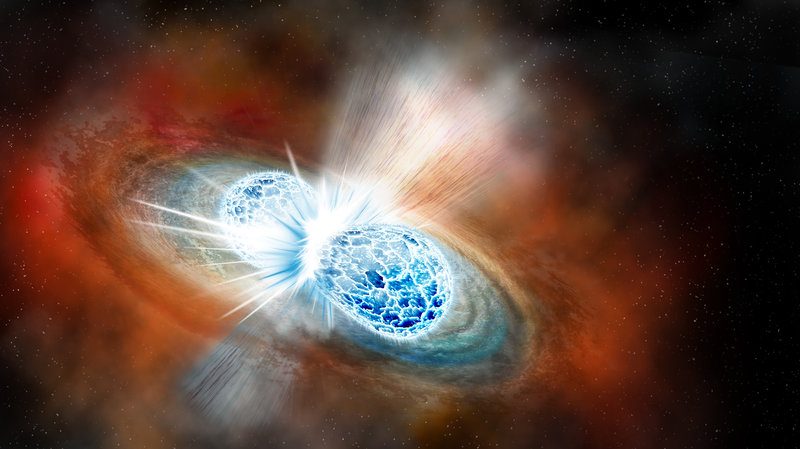Featured
What the heck is a neutron star, anyway?

By Tim Stevens
UC Santa Cruz
October 17, 2017 — Santa Cruz, CA
A small team of UC Santa Cruz astronomers were the first team to observe light from two neutron stars merging in August. The implications are huge.
Astronomer Ryan Foley says observing the explosion of two colliding neutron stars–the first visible event ever linked to gravitational waves–is probably the biggest discovery he’ll make in his lifetime. That’s saying a lot for a young assistant professor who presumably has a long career still ahead of him.
So what makes this strange cataclysm in another galaxy so exciting to astronomers? And what the heck is a neutron star, anyway?
A neutron star forms when a massive star runs out of fuel and explodes as a supernova, throwing off its outer layers and leaving behind a collapsed core composed almost entirely of neutrons. Neutrons are the uncharged particles in the nucleus of an atom, where they are bound together with positively charged protons. In a neutron star, they are packed together just as densely as in the nucleus of an atom, resulting in an object with one to three times the mass of our sun but only about 12 miles wide.
“Basically, a neutron star is a gigantic atom with the mass of the sun and the size of a city like San Francisco or Manhattan,” said Foley, an assistant professor of astronomy and astrophysics at UC Santa Cruz.
These objects are so dense, a cup of neutron star material would weigh as much as Mount Everest, and a teaspoon would weigh a billion tons. It’s as dense as matter can get without collapsing into a black hole.
The Merger
Like other stars, neutron stars sometimes occur in pairs, orbiting each other and gradually spiraling inward. Eventually, they come together in a catastrophic merger that distorts space and time (creating gravitational waves) and emits a brilliant flare of electromagnetic radiation, including visible, infrared, and ultraviolet light, x-rays, gamma rays, and radio waves. Merging black holes also create gravitational waves, but there’s nothing to be seen because no light can escape from a black hole.
Foley’s team was the first to observe the light from a neutron star merger that took place on August 17, 2017, and was detected by the Advanced Laser Interferometer Gravitational-Wave Observatory (LIGO). Now, for the first time, scientists can study both the gravitational waves (ripples in the fabric of space-time), and the radiation emitted from the violent merger of the densest objects in the universe.
Continue reading article here: http://reports.news.ucsc.edu/neutron-star-merger/
###




